Events
| Name | organizer | Where |
|---|---|---|
| MBCC “Doing Business with Mongolia seminar and Christmas Receptiom” Dec 10. 2025 London UK | MBCCI | London UK Goodman LLC |
NEWS

Banned for decades, ancient Mongolian sport of knucklebone making a comeback www.cbc.ca
Winter is a difficult time for many, particularly during a pandemic. Cool with Cold is a CBC Ottawa series highlighting people who've found creative ways to embrace the season, safely.
Bundled up against the winter chill on a backyard rink, Zolzaya Sanjmyatav demonstrates the proper technique for throwing a zakh down the ice, just like her Mongolian ancestors did for centuries — only in this case, the zakh is a plastic hockey puck, an alteration she calls a "Canadian adjustment."
Sanjmyatav grew up in Mongolia's coldest city, Tosontsengel, in the northwest province of Zavkhan, where she played many of the same winter sports as Canadians.
"In Mongolia we do skating, skiing and sledding like in Canada. But one of the very unique sports that we play during the winter is knucklebone," said Sanjmyatav.
Sanjmyatav went online to study the rules so she could teach her children Sodbileg,13, Sainbileg, 10 and Uranbileg, 8, how to play.
Now, as a diplomat in charge of culture, sport and political affairs at the Embassy of Mongolia in Ottawa, she said she's excited to share the finer points of knucklebone with Canadians.
Rules of the game
Similar to curling, "knucklebone ice shooting" takes place on a sheet of ice, as its full name suggests. Players take turns sliding the zakh, traditionally made of metal or carved deer antler, toward targets set out 100 metres away, though the distance can be shortened depending on the length of the ice surface at hand.
Sanjmyatav uses real cow and sheep knucklebones painted bright red for extra visibility. Players score points for each sheep knucklebone they hit, and three points for the larger cow knucklebone in the centre.
The scoring system reflects the country's religious history. For every point earned, players draw one line of a temple on a sheet of paper. The first team to complete a temple wins.
"It's very much connected to our Buddhist religion," explained Sanjmyatav.
Sanjmyatav said after the Soviet Union established the Mongolian People's Republic, the game of knucklebone was outlawed.
"From 1924 to the 1990s, the socialist regime banned many cultural and religious activities," she said.
After the fall of the Soviet-backed government in 1990, there was a resurgence of Buddhism. Mongolians began reconnecting with their culture, including traditional games.
"It's like finding a treasure. We didn't know that this sport existed," said Sanjmyatav.
Now, the Mongolian Knucklebone Association is working to establish the game as an official winter sport in Mongolia, organizing annual championships across the country.
To keep score, players draw lines to create an image of a Buddhist temple. The first team to complete a temple wins. (Francis Ferland/CBC)
Played by Genghis Khan
According to Mongolian historians, knucklebone was first documented in the 12th-century literary text The Secret History of the Mongols, an epic that chronicles the life of conqueror Genghis Khan. In the book, Khan plays knucklebone with his friend Jamukha on a frozen river.
Originally played to strengthen hunters' eyesight so they could spot animals from far away, the goal of the game changed in the 17th century when Buddhist monks took it up to improve their mental and physical health.
"The [monks] said that the air on the river is the purest, so it's one of the reasons they played," said Sanjmyatav.
Sanjmyatav's husband Togtokhbayar (Togy) Batpurev shows the proper technique for launching the zakh — in this case, a plastic hockey puck. (Francis Ferland/CBC)
Sanjmyatav said the game has taken on a new meaning for families whose usual winter activities have been curtailed by the COVID-19 pandemic, including her own.
"I was amazed at how well-structured and sophisticated this game was, that was invented hundreds of years ago. But it still has so many mental, social and physical benefits for the well-being of kids," she said.
And it's been a fun way to help her family rediscover their roots, too.
"I have this sense of responsibility to teach them their heritage cultures so they know who they are," Sanjmyatav said.
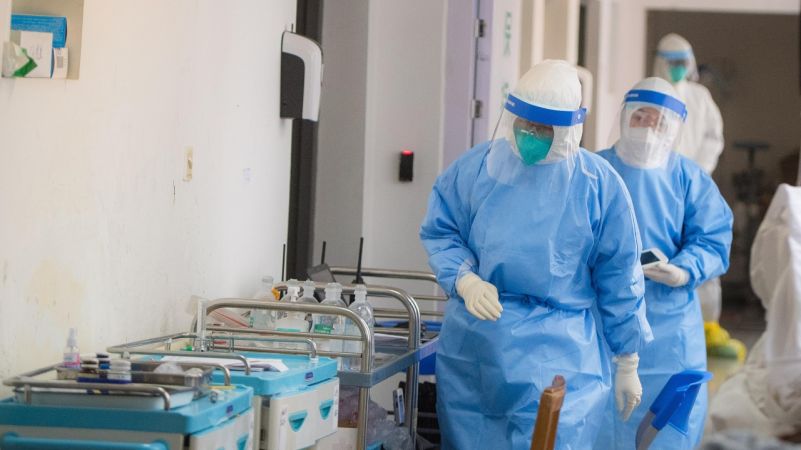
30 new cases of COVID-19 reported, total reaches 2,723 www.montsame.mn
Ulaanbaatar /MONTSAME/ The Ministry of Health provided updates on coronavirus situation in Mongolia. According to the Ministry, 30 people were detected with coronavirus when performing tests on 42,920 people nationwide on February 22.
Thus, confirmed cases of COVID-19 in Mongolia have reached 2,723. 70 people have recovered and discharged from hospital yesterday, bringing the number of recovered people at 2,003. A total registered cases in Ulaanbaatar city has reached 1,882 and no infection cases have been reported in other aimags.
Currently, 705 people are under treatment and two of them in very critical, six are in critical, 84 are in serious and 598 are in mild health condition.
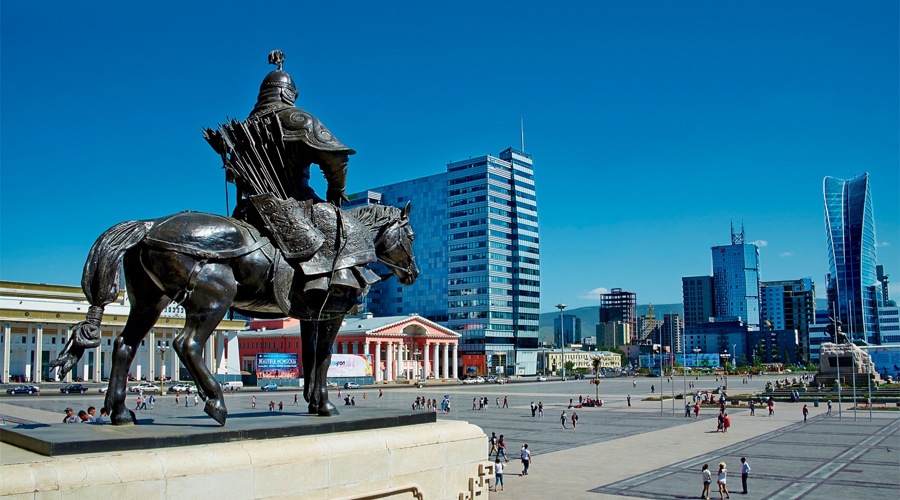
Mongolia successfully launches COVID-19 vaccination programme www.montsame.mn
Joint Press Release on COVID-19 Vaccination Roll-out in Mongolia by the Government of Mongolia, United Nations Resident Coordinator’s Office, WHO and UNICEF
Ulaanbaatar, 23 February 2021 -- Today marks a major milestone for Mongolia with the administration of its first batch of vaccine to prevent the coronavirus disease (COVID-19), beginning with the frontline health care workers at high risk. The government of Mongolia has received an initial 150000 doses of AstraZeneca-Oxford vaccine, produced by the Serum Institute of India, that has received Emergency Use Listing by the World Health Organization (WHO) and approval by Mongolia’s national regulatory authority. Following the arrival of further doses, other priority groups, including older people and those with health issues, which put them at higher risk for severe illness, will be vaccinated against the coronavirus.
The government of Mongolia has implemented a number of preventive measures to contain the local epicentres of COVID-19 and the spread of the virus. Following the first imported case reported in March 2020, the country has successfully contained the virus’ spread with no local transmissions until November 2020. When the pandemic spread amongst local communities, the Government has continued its efforts to minimize the pandemic’s impact.
The arrival of the first doses of vaccines brings hope, but other prevention measures must continue. Step-by-step vaccination of 60 per cent of the population will allow citizens, businesses and organizations to return to a normal lifestyle and to this extent, revitalize the economy and thereby provide jobs and increase income.
This time, by imposing the State of All-Out-Readiness in Ulaanbaatar, Mongolians were able to contain the outbreak, limit the spread of the disease, prepare for vaccination roll-out and build the basis for the implementation of the 10 trillion Comprehensive national plan to protect the public health and recover the economy.
Prime Minister L. Oyun-Erdene said:
“The State of All-Out-Readiness ends today and the curfew in the capital has been lifted. Citizens, businesses and organizations have returned to normal work and life. Twelve days, another example of how our nation can face adversity together, are behind us. I would like to express my gratitude to the residents and citizens of the Capital City, who respected and tolerated the Government's decision during the quarantine.
Within the framework of "One door - One test", 33 local epicentres of coronavirus and 122 cases were identified. In other words, the risk of onward transmission through these 122 people was eliminated and a comprehensive information base for each household was created.
I would like to emphasize that “One Door - One Test” is a baseline study for further developing a strategy of where we should go tomorrow, based on where we are now. My appreciation goes to all Government workers and employees, who have fulfilled their duties.”
Further, Prime Minister has noted that time to calm down is yet to come and urged everyone to adhere to the infection control regime. He also expressed his gratitude to the Government of India, World Health Organization, UN Resident Coordinator Office and UNICEF for their support in obtaining vaccines that meet international standards, as well as the Governments of Russia, China, the European Union, Republic of Korea and Japan.
The United Nations (UN) in Mongolia, with the leadership of WHO and UNICEF, is pleased to partner with the Government of Mongolia, in the successful facilitation of its national programme of vaccination against COVID-19. The UN in Mongolia thanks the people of Mongolia for their continued strong solidarity and cooperation with health authorities in implementing the prevention measures, including hand washing, mask wearing and physical distancing, and complying with other restriction measures to minimize spread of the virus.
“I want to congratulate the people of Mongolia for successfully rolling out the first COVID-19 vaccines. Ahead of us is the great challenge in ensuring “vaccines for all” is a reality. It is the UN’s conviction that fair and equitable access to vaccines, backed by well-planned and resourced supply chains, as well as distribution support, is not only the right thing to do, but the smart thing to do,” Tapan Mishra, UN Resident Coordinator in Mongolia, said.
The global effort to develop and deploy safe and effective COVID-19 vaccines is truly unprecedented. WHO has been engaging with partners at all levels to ensure that countries, including Mongolia, are ready for the rapid deployment of vaccines, since no country is safe until people in all countries are protected. WHO supported the Government of Mongolia to prepare and submit to COVAX a sound National Vaccine Deployment Plan that demonstrates effective preparation and readiness including planning and coordination, training of healthcare workers and other front-line workers at national and sub-national level, prioritization of target populations, country cold chain capacity readiness and vaccine safety monitoring.
Congratulating the Government of Mongolia and the Minister of Health on successfully bringing the first doses of COVID-19 vaccine to the country, WHO Representative to Mongolia Dr Sergey Diorditsa said:
“Vaccines, in combination with other protective measures, are an important new tool in our fight against the COVID-19 pandemic. WHO will continue supporting the country to ensure successful and equitable deployment of COVID-19 vaccines by providing technical support, capacity building with health workers, providing necessary equipment and tools to strengthen safe storage and vaccination capacity, and engaging with health workers, frontline workers and communities to ensure that they are well-informed about COVID-19 vaccines and other important prevention measures.”
Globally, UNICEF is leading the procurement and supply of COVID-19 vaccines for 171 countries including Mongolia on behalf of the COVAX Facility – a partnership between WHO, Gavi the Vaccine Alliance, and the Coalition for Epidemic Preparedness Innovations (CEPI). At country level, UNICEF is supporting the Government of Mongolia to ensure the country is ready to introduce and deploy the vaccine. UNICEF is helping to upgrade Mongolia’s capacity to safely and securely store vaccines across the country, across the country, addressing misinformation, and building trust in safe and effective vaccines and in the health systems that deliver them.
UNICEF is giving top-priority to support the COVID-19 vaccination program because although only adults will be vaccinated, children will benefit tremendously: stopping the pandemic will allow children to go fully back to kindergarten, to school, to socialize with friends and to play sports as they have seriously fallen behind in their education and social development.

Finance Minister discusses development cooperation with EU Ambassador www.montsame.mn
Ulaanbaatar /MONTSAME/ Minister of Finance B.Javkhlan held a meeting with Ambassador Extraordinary and Plenipotentiary of the European Union to Mongolia Traian Hristea on February 22.
They discussed development cooperation activities between Mongolia and the EU as well as EU 2021-2027Multi Annual Indicative Program’s priority areas of cooperation.
Stressing that the EU attaches great importance to its relations and cooperation with Mongolia, Ambassador Traian Hristea expressed readiness to provide support and cooperate in the areas of environment, renewable energy, and agriculture, and in strengthening democracy, budget and financial management, and trade and investment climate.
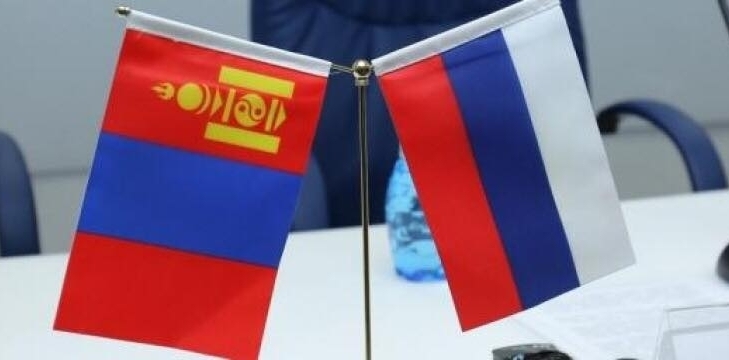
Mongolian Ambassador to Russia receives Sputnik V jab www.news.mn
The Mongolian ambassador to Moscow and some other embassy staffers have been inoculated against COVID-19 with Russia’s Sputnik V vaccine, the diplomatic mission reported on Friday.
“I am glad to announce that diplomats from our embassy were vaccinated a long time ago, with Sputnik, to be precise. The ambassador was the first to be inoculated”, an embassy spokesperson said.
The vaccination took place at the ambassador’s initiative; most diplomatic staff members have already received the vaccine, the embassy continued.
“One or two people felt slightly weak in the first days [after the jab], while everything was fine with others”, the diplomatic mission added.
Sputnik V, developed by the Gamaleya Epidemiology and Microbiology Centre and registered by the Russian Health Ministry on 11 August, was the world’s first vaccine against the novel coronavirus. The vaccine shows 91.6 percent efficacy and is 100 percent effective against severe complications. The vaccine consists of two components that are administered to a person within a 21-day interval.

Rio Tinto’s former boss gets huge payout despite caves blast www.mining.com
Rio Tinto’s (ASX, LON, NYSE: RIO) former chief executive Jean-Sébastien Jacques and other two executives forced to leave the company after the destruction of sacred rock shelters in Western Australia closed out 2020 with substantial payouts.
Jacques received £13.3 million ($18.6 million) in pay and long-term incentive rewards last year, compared to £7.1 million ($9.9 million) in 2019, Rio’s annual report, published on Monday, shows.
The French executive and two other senior managers — former iron ore boss Chris Salisbury, and ex-corporate affairs head Simone Niven — had to step down last September. The move was a direct result of shareholder and public outcry over the destruction of the 46,000-year-old Juukan Gorge caves to expand an iron ore mine, despite opposition from traditional landowners.
Jacques’ annual pay increase was driven by a surge in the value of unvested shares awarded in 2016 when he took the company’s helm. The paycheque could have been heftier, but the sacred sites blasting cost Rio’s ex-boss performance bonuses worth an estimated £2.7 million ($3.8 million).
Salisbury received total remuneration of A$6.7 million ($5.3 million) including termination benefits and unvested share awards, from A$2.9 million in 2019. Salisbury lost a A$1.1 million short-term incentive.
Niven lost £525,000 in short-term incentives but received £5.1 million, including £1.1 million in termination benefits and unvested share awards.
Enough sanctions?
The world’s second largest miner noted that, in determining the final payout to all three departing executives, it “fully recognized the gravity of the destruction at Juukan Gorge, but [the board] was mindful that the three executives did not deliberately cause the events to happen, they did not do anything unlawful, nor did they engage in fraudulent or dishonest behaviour or willfully neglect their duties.”
Rio’s move triggered immediate criticism, with the Australasian Centre for Corporate Responsibility (ACCR), which represents institutional investors, arguing none of the three former executives should have been rewarded.
“The decision to destroy the Juukan Gorge caves was morally repugnant and financially stupid,” James Fitzgerald, strategy lead of ACCR, said in a statement. “It has already cost the company millions, and the true cost won’t be known for years to come.”
Fitzgerald added the payout casts doubt over the company’s various “expressions of sorrow and regret” over the incident.
Rio, which is also the world’s top iron ore miner, added that it had to factor in “the loss of employment for the three individuals, against the considerable achievements of those executives over many years.”
“In this context, the loss of employment was considered the greater sanction,” the company said.
Rio Tinto rewarded investors last week with the biggest dividend in its 148-year history — $9 billion in cash, including a record final dividend of $6.5 billion.

Mongolia receives COVID-19 vaccine donation from China www.xinhuanet.com
Feb. 22 (Xinhua) -- Mongolia on Monday night received 300,000 doses of Sinopharm COVID-19 vaccine donated by China.
The vaccine donation was welcomed at the Chinggis Khaan International Airport in Mongolia's capital city of Ulan Bator by Mongolian Deputy Prime Minister Sainbuyan Amarsaikhan and Chinese Ambassador to Mongolia Chai Wenrui.
"On behalf of the Mongolian government and people, I would like to express my deep gratitude to China, our friendly neighbor and comprehensive strategic partner, for extending its helping hand during this difficult time," said Amarsaikhan.
"There is a Mongolian saying that goes, 'Close neighbors have one life, far away neighbors have one mind.' Since the start of the COVID-19 outbreak, Mongolia and China have provided each other with material and emotional support, which is a real example of how neighboring countries are overcoming difficulties together," he said.
For his part, Chai said, "The current global vaccine supply and demand are very tight. China has overcome difficulties when its own vaccine supply is not sufficient, and has not hesitated to give 300,000 doses of vaccine to Mongolia free of charge, which shows that China attaches great importance to China-Mongolia relations and the friendship between the two peoples."
The Chinese ambassador expressed confidence that these vaccines will contribute to the protection of people's lives and the fight against the pandemic in Mongolia.
Mongolia is planning to vaccinate at least 60 percent of its 3.3 million people, or all adults in the country, against the coronavirus, with 20 percent of them to be vaccinated under COVAX, a global initiative to ensure quick and equal access to vaccines against the virus, according to the country's health ministry.
The Asian country is expected to launch a nationwide COVID-19 vaccination campaign on Tuesday.
As of Monday, the country recorded 2,693 COVID-19 cases, with six deaths. Enditem

Boeing recommends airlines suspend use of some 777s after United incident www.reuters.com
(Reuters) - Boeing Co urged airlines to suspend the use of 777 jets with the same type of engine that shed debris over Denver at the weekend after U.S. regulators announced extra inspections and Japan suspended their use while considering further action.
The moves involving Pratt & Whitney PW4000 engines came after a United Airlines 777’s right engine failed on Saturday, scattering its protective outer casing over a residential area.
United said the next day it would voluntarily and temporarily remove its 24 active planes, hours before Boeing’s announcement.
Boeing said 69 of the 777 planes with PW4000 engines were in service and 59 were stored, at a time when airlines have grounded planes due to a plunge in demand associated with the COVID-19 pandemic.
The manufacturer recommended airlines suspend operating them until U.S. regulators identified the appropriate inspection protocol.
It falls short of a mandatory global grounding but is another headache for the plane maker after its 737 MAX crisis and comes after criticism of U.S. Federal Aviation Administration (FAA) oversight regarding the 737 MAX.
The 777-200s and 777-300s affected are older and less fuel efficient than newer models and are currently being flown by just five airlines - United, Japan Airlines Co Ltd (JAL), ANA Holdings Inc, Asiana Airlines Inc and Korean Air Lines Co Ltd. Most of them are phasing them out of their fleets.
The problem concerns Pratt & Whitney, one of three engine makers originally involved in the 777, whose engines power less than 10% of the delivered fleet of more than 1,600 planes.
The National Transportation Safety Board (NTSB) said its initial examination of the 26-year-old plane indicated most of the damage was confined to the right engine, with only minor damage to the airplane.
Korean Air to follow relevant authorities' directives on Boeing 777
It said the inlet and casing separated from the engine and two fan blades were fractured, while the other fan blades exhibited damage.
Pratt & Whitney, owned by Raytheon Technologies Corp, said it was coordinating with operators and regulators to support a revised inspection interval for the engines.
METAL FATIGUE
Japan’s transport ministry ordered JAL and ANA Holdings to suspend their use while it considered whether to take additional measures, acting before the FAA.
An official at South Korea’s transport ministry said it was waiting for formal action by the FAA before giving a directive to its airlines. The U.S. agency said it would soon issue an emergency airworthiness directive.
“Based on the initial information, we concluded that the inspection interval should be stepped up for the hollow fan blades that are unique to this model of engine, used solely on Boeing 777 airplanes,” the FAA said.
Japan’s transport ministry said that on Dec. 4, 2020, a JAL flight from Naha Airport to Tokyo returned to Naha due to a malfunction in the left engine.
Its Transport Safety Board said on Dec. 28 that it had found two of the left engine’s fan blades were damaged, one from a crack due to metal fatigue. The investigation is ongoing.
Korean Air - which has 16 of the planes, 10 of them stored - said it will follow the relevant authorities’ directives on any measures.
The Dutch Safety Board said on Monday it was investigating what had caused a Boeing 747-400 to lose parts of a different type of PW4000 engine shortly after taking off from Maastricht airport on Saturday.
The European Union Aviation Safety Agency meanwhile said it was requesting information on the cause to determine what action was needed.
In February 2018, a 777 of the same age operated by United suffered an engine failure when a cowling fell off about 30 minutes before the plane landed safely. The NTSB determined that incident was the result of a full-length fan blade fracture.
Reporting by Jamie Freed in Sydney and David Shepardson in Washington; additional reporting by Eimi Yamamitsu and Maki Shiraki in Tokyo, Joyce Lee in Seoul and Tim Hepher in Paris; Editing by Sam Holmes, Christopher Cushing and Emelia Sithole-Matarise
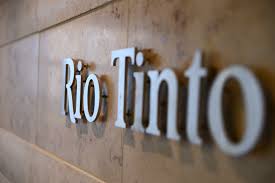
Rio Tinto blew up a sacred site in Australia. The CEO left but still got a huge payout www.cnn.com
Hong Kong (CNN Business)Rio Tinto's former CEO got a huge payout last year despite being forced to resign over the company's destruction of a sacred Indigenous site in Australia.
Jean-Sébastien Jacques received £13.3 million ($18.6 million) in pay and long-term incentive rewards in 2020, compared to £7.1 million ($9.9 million) the previous year, according to the company's annual report, which was published on Monday.
Jacques was forced to depart under pressure from investors last September in the wake of the mining giant's demolition of the Juukan Gorge caves in Western Australia. The company destroyed the 46,000-year-old Indigenous site last May to expand an iron ore mine.
The local custodians of the land, the Puutu Kunti Kurrama and Pinikura people, had been fighting for seven years to protect the caves.
Rio Tinto later apologized for the incident, with its chairman Simon Thompson admitting: "What happened at Juukan was wrong."
The company also cut bonuses for Jacques and two other senior executives, worth a combined £3.8 million ($5 million). But it didn't immediately fire any executives, which led to more criticism of the company's response.
Jacques handed the reins over to Chief Financial Officer Jakob Stausholm on January 1. Chris Salisbury, head of the iron ore business, and Simone Niven, group executive for corporate relations, also left the company at the end of December.
Rio Tinto said in its annual report that in determining the final payout to all three departing executives, "the board fully recognized the gravity of the destruction at Juukan Gorge but was mindful that the three executives did not deliberately cause the events to happen, they did not do anything unlawful, nor did they engage in fraudulent or dishonest behavior or willfully neglect their duties."
It also added that it had to factor in "the loss of employment for the three individuals, against the considerable achievements of those executives over many years."
"In this context, the loss of employment was considered the greater sanction," the company wrote.
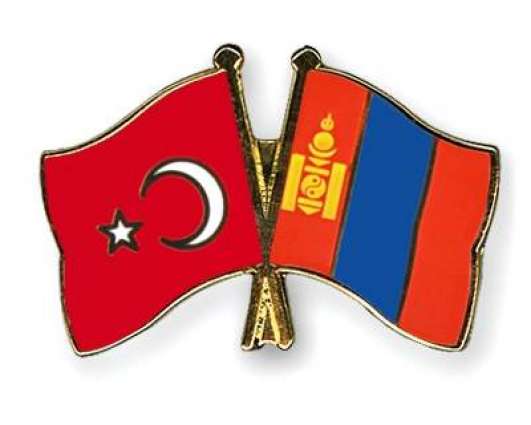
TİKA Provided Food Parcels to 2,000 Families in Mongolia www.reliefweb.int
Turkish Cooperation and Coordination Agency (TİKA) distributed food parcels and hygiene products to 2000 families in Mongolia in order to support the fight against COVID-19.
As part of the project implemented by TİKA, a total of 2,000 food parcels were distributed to the General Authority for Development of Persons with Disabilities and low-income families in the municipalities of Bayangol, Bayanzürkh, Nalaikh, Khan Uul, Songino Khairkhan, Sükhbaatar, and Chingeltei in Ulaanbaatar. The food parcels were delivered to families at a ceremony held on “Tsagaan Sar (White Moon),” the most important national holiday in Mongolia.
The ceremony was attended by Zülfikar Sarkıt, Mongolia’s Deputy Minister of Labor and Social Protection; Emrah Ustaömer, TİKA’s Ulaanbaatar Coordinator; and the representatives of the social welfare agencies of municipalities.
In his speech at the ceremony, Zülfikar Sarkıt, Mongolia’s Deputy Minister of Labor and Social Protection, said, “TİKA always supports Mongolia by implementing projects in different fields. Low-income families needed food aid due to the COVID-19 lockdown imposed in the country. As our Ministry could not provide sufficient food aid to these families, we submitted our request to TİKA. Thankfully, TİKA accepted our request. We are very pleased with this support, which is provided on a religious holiday that is very important for the people of Mongolia and celebrated by sharing food as a ritual. We would like to thank the Government of Turkey and TİKA.”
- «
- 1
- 2
- 3
- 4
- 5
- 6
- 7
- 8
- 9
- 10
- 11
- 12
- 13
- 14
- 15
- 16
- 17
- 18
- 19
- 20
- 21
- 22
- 23
- 24
- 25
- 26
- 27
- 28
- 29
- 30
- 31
- 32
- 33
- 34
- 35
- 36
- 37
- 38
- 39
- 40
- 41
- 42
- 43
- 44
- 45
- 46
- 47
- 48
- 49
- 50
- 51
- 52
- 53
- 54
- 55
- 56
- 57
- 58
- 59
- 60
- 61
- 62
- 63
- 64
- 65
- 66
- 67
- 68
- 69
- 70
- 71
- 72
- 73
- 74
- 75
- 76
- 77
- 78
- 79
- 80
- 81
- 82
- 83
- 84
- 85
- 86
- 87
- 88
- 89
- 90
- 91
- 92
- 93
- 94
- 95
- 96
- 97
- 98
- 99
- 100
- 101
- 102
- 103
- 104
- 105
- 106
- 107
- 108
- 109
- 110
- 111
- 112
- 113
- 114
- 115
- 116
- 117
- 118
- 119
- 120
- 121
- 122
- 123
- 124
- 125
- 126
- 127
- 128
- 129
- 130
- 131
- 132
- 133
- 134
- 135
- 136
- 137
- 138
- 139
- 140
- 141
- 142
- 143
- 144
- 145
- 146
- 147
- 148
- 149
- 150
- 151
- 152
- 153
- 154
- 155
- 156
- 157
- 158
- 159
- 160
- 161
- 162
- 163
- 164
- 165
- 166
- 167
- 168
- 169
- 170
- 171
- 172
- 173
- 174
- 175
- 176
- 177
- 178
- 179
- 180
- 181
- 182
- 183
- 184
- 185
- 186
- 187
- 188
- 189
- 190
- 191
- 192
- 193
- 194
- 195
- 196
- 197
- 198
- 199
- 200
- 201
- 202
- 203
- 204
- 205
- 206
- 207
- 208
- 209
- 210
- 211
- 212
- 213
- 214
- 215
- 216
- 217
- 218
- 219
- 220
- 221
- 222
- 223
- 224
- 225
- 226
- 227
- 228
- 229
- 230
- 231
- 232
- 233
- 234
- 235
- 236
- 237
- 238
- 239
- 240
- 241
- 242
- 243
- 244
- 245
- 246
- 247
- 248
- 249
- 250
- 251
- 252
- 253
- 254
- 255
- 256
- 257
- 258
- 259
- 260
- 261
- 262
- 263
- 264
- 265
- 266
- 267
- 268
- 269
- 270
- 271
- 272
- 273
- 274
- 275
- 276
- 277
- 278
- 279
- 280
- 281
- 282
- 283
- 284
- 285
- 286
- 287
- 288
- 289
- 290
- 291
- 292
- 293
- 294
- 295
- 296
- 297
- 298
- 299
- 300
- 301
- 302
- 303
- 304
- 305
- 306
- 307
- 308
- 309
- 310
- 311
- 312
- 313
- 314
- 315
- 316
- 317
- 318
- 319
- 320
- 321
- 322
- 323
- 324
- 325
- 326
- 327
- 328
- 329
- 330
- 331
- 332
- 333
- 334
- 335
- 336
- 337
- 338
- 339
- 340
- 341
- 342
- 343
- 344
- 345
- 346
- 347
- 348
- 349
- 350
- 351
- 352
- 353
- 354
- 355
- 356
- 357
- 358
- 359
- 360
- 361
- 362
- 363
- 364
- 365
- 366
- 367
- 368
- 369
- 370
- 371
- 372
- 373
- 374
- 375
- 376
- 377
- 378
- 379
- 380
- 381
- 382
- 383
- 384
- 385
- 386
- 387
- 388
- 389
- 390
- 391
- 392
- 393
- 394
- 395
- 396
- 397
- 398
- 399
- 400
- 401
- 402
- 403
- 404
- 405
- 406
- 407
- 408
- 409
- 410
- 411
- 412
- 413
- 414
- 415
- 416
- 417
- 418
- 419
- 420
- 421
- 422
- 423
- 424
- 425
- 426
- 427
- 428
- 429
- 430
- 431
- 432
- 433
- 434
- 435
- 436
- 437
- 438
- 439
- 440
- 441
- 442
- 443
- 444
- 445
- 446
- 447
- 448
- 449
- 450
- 451
- 452
- 453
- 454
- 455
- 456
- 457
- 458
- 459
- 460
- 461
- 462
- 463
- 464
- 465
- 466
- 467
- 468
- 469
- 470
- 471
- 472
- 473
- 474
- 475
- 476
- 477
- 478
- 479
- 480
- 481
- 482
- 483
- 484
- 485
- 486
- 487
- 488
- 489
- 490
- 491
- 492
- 493
- 494
- 495
- 496
- 497
- 498
- 499
- 500
- 501
- 502
- 503
- 504
- 505
- 506
- 507
- 508
- 509
- 510
- 511
- 512
- 513
- 514
- 515
- 516
- 517
- 518
- 519
- 520
- 521
- 522
- 523
- 524
- 525
- 526
- 527
- 528
- 529
- 530
- 531
- 532
- 533
- 534
- 535
- 536
- 537
- 538
- 539
- 540
- 541
- 542
- 543
- 544
- 545
- 546
- 547
- 548
- 549
- 550
- 551
- 552
- 553
- 554
- 555
- 556
- 557
- 558
- 559
- 560
- 561
- 562
- 563
- 564
- 565
- 566
- 567
- 568
- 569
- 570
- 571
- 572
- 573
- 574
- 575
- 576
- 577
- 578
- 579
- 580
- 581
- 582
- 583
- 584
- 585
- 586
- 587
- 588
- 589
- 590
- 591
- 592
- 593
- 594
- 595
- 596
- 597
- 598
- 599
- 600
- 601
- 602
- 603
- 604
- 605
- 606
- 607
- 608
- 609
- 610
- 611
- 612
- 613
- 614
- 615
- 616
- 617
- 618
- 619
- 620
- 621
- 622
- 623
- 624
- 625
- 626
- 627
- 628
- 629
- 630
- 631
- 632
- 633
- 634
- 635
- 636
- 637
- 638
- 639
- 640
- 641
- 642
- 643
- 644
- 645
- 646
- 647
- 648
- 649
- 650
- 651
- 652
- 653
- 654
- 655
- 656
- 657
- 658
- 659
- 660
- 661
- 662
- 663
- 664
- 665
- 666
- 667
- 668
- 669
- 670
- 671
- 672
- 673
- 674
- 675
- 676
- 677
- 678
- 679
- 680
- 681
- 682
- 683
- 684
- 685
- 686
- 687
- 688
- 689
- 690
- 691
- 692
- 693
- 694
- 695
- 696
- 697
- 698
- 699
- 700
- 701
- 702
- 703
- 704
- 705
- 706
- 707
- 708
- 709
- 710
- 711
- 712
- 713
- 714
- 715
- 716
- 717
- 718
- 719
- 720
- 721
- 722
- 723
- 724
- 725
- 726
- 727
- 728
- 729
- 730
- 731
- 732
- 733
- 734
- 735
- 736
- 737
- 738
- 739
- 740
- 741
- 742
- 743
- 744
- 745
- 746
- 747
- 748
- 749
- 750
- 751
- 752
- 753
- 754
- 755
- 756
- 757
- 758
- 759
- 760
- 761
- 762
- 763
- 764
- 765
- 766
- 767
- 768
- 769
- 770
- 771
- 772
- 773
- 774
- 775
- 776
- 777
- 778
- 779
- 780
- 781
- 782
- 783
- 784
- 785
- 786
- 787
- 788
- 789
- 790
- 791
- 792
- 793
- 794
- 795
- 796
- 797
- 798
- 799
- 800
- 801
- 802
- 803
- 804
- 805
- 806
- 807
- 808
- 809
- 810
- 811
- 812
- 813
- 814
- 815
- 816
- 817
- 818
- 819
- 820
- 821
- 822
- 823
- 824
- 825
- 826
- 827
- 828
- 829
- 830
- 831
- 832
- 833
- 834
- 835
- 836
- 837
- 838
- 839
- 840
- 841
- 842
- 843
- 844
- 845
- 846
- 847
- 848
- 849
- 850
- 851
- 852
- 853
- 854
- 855
- 856
- 857
- 858
- 859
- 860
- 861
- 862
- 863
- 864
- 865
- 866
- 867
- 868
- 869
- 870
- 871
- 872
- 873
- 874
- 875
- 876
- 877
- 878
- 879
- 880
- 881
- 882
- 883
- 884
- 885
- 886
- 887
- 888
- 889
- 890
- 891
- 892
- 893
- 894
- 895
- 896
- 897
- 898
- 899
- 900
- 901
- 902
- 903
- 904
- 905
- 906
- 907
- 908
- 909
- 910
- 911
- 912
- 913
- 914
- 915
- 916
- 917
- 918
- 919
- 920
- 921
- 922
- 923
- 924
- 925
- 926
- 927
- 928
- 929
- 930
- 931
- 932
- 933
- 934
- 935
- 936
- 937
- 938
- 939
- 940
- 941
- 942
- 943
- 944
- 945
- 946
- 947
- 948
- 949
- 950
- 951
- 952
- 953
- 954
- 955
- 956
- 957
- 958
- 959
- 960
- 961
- 962
- 963
- 964
- 965
- 966
- 967
- 968
- 969
- 970
- 971
- 972
- 973
- 974
- 975
- 976
- 977
- 978
- 979
- 980
- 981
- 982
- 983
- 984
- 985
- 986
- 987
- 988
- 989
- 990
- 991
- 992
- 993
- 994
- 995
- 996
- 997
- 998
- 999
- 1000
- 1001
- 1002
- 1003
- 1004
- 1005
- 1006
- 1007
- 1008
- 1009
- 1010
- 1011
- 1012
- 1013
- 1014
- 1015
- 1016
- 1017
- 1018
- 1019
- 1020
- 1021
- 1022
- 1023
- 1024
- 1025
- 1026
- 1027
- 1028
- 1029
- 1030
- 1031
- 1032
- 1033
- 1034
- 1035
- 1036
- 1037
- 1038
- 1039
- 1040
- 1041
- 1042
- 1043
- 1044
- 1045
- 1046
- 1047
- 1048
- 1049
- 1050
- 1051
- 1052
- 1053
- 1054
- 1055
- 1056
- 1057
- 1058
- 1059
- 1060
- 1061
- 1062
- 1063
- 1064
- 1065
- 1066
- 1067
- 1068
- 1069
- 1070
- 1071
- 1072
- 1073
- 1074
- 1075
- 1076
- 1077
- 1078
- 1079
- 1080
- 1081
- 1082
- 1083
- 1084
- 1085
- 1086
- 1087
- 1088
- 1089
- 1090
- 1091
- 1092
- 1093
- 1094
- 1095
- 1096
- 1097
- 1098
- 1099
- 1100
- 1101
- 1102
- 1103
- 1104
- 1105
- 1106
- 1107
- 1108
- 1109
- 1110
- 1111
- 1112
- 1113
- 1114
- 1115
- 1116
- 1117
- 1118
- 1119
- 1120
- 1121
- 1122
- 1123
- 1124
- 1125
- 1126
- 1127
- 1128
- 1129
- 1130
- 1131
- 1132
- 1133
- 1134
- 1135
- 1136
- 1137
- 1138
- 1139
- 1140
- 1141
- 1142
- 1143
- 1144
- 1145
- 1146
- 1147
- 1148
- 1149
- 1150
- 1151
- 1152
- 1153
- 1154
- 1155
- 1156
- 1157
- 1158
- 1159
- 1160
- 1161
- 1162
- 1163
- 1164
- 1165
- 1166
- 1167
- 1168
- 1169
- 1170
- 1171
- 1172
- 1173
- 1174
- 1175
- 1176
- 1177
- 1178
- 1179
- 1180
- 1181
- 1182
- 1183
- 1184
- 1185
- 1186
- 1187
- 1188
- 1189
- 1190
- 1191
- 1192
- 1193
- 1194
- 1195
- 1196
- 1197
- 1198
- 1199
- 1200
- 1201
- 1202
- 1203
- 1204
- 1205
- 1206
- 1207
- 1208
- 1209
- 1210
- 1211
- 1212
- 1213
- 1214
- 1215
- 1216
- 1217
- 1218
- 1219
- 1220
- 1221
- 1222
- 1223
- 1224
- 1225
- 1226
- 1227
- 1228
- 1229
- 1230
- 1231
- 1232
- 1233
- 1234
- 1235
- 1236
- 1237
- 1238
- 1239
- 1240
- 1241
- 1242
- 1243
- 1244
- 1245
- 1246
- 1247
- 1248
- 1249
- 1250
- 1251
- 1252
- 1253
- 1254
- 1255
- 1256
- 1257
- 1258
- 1259
- 1260
- 1261
- 1262
- 1263
- 1264
- 1265
- 1266
- 1267
- 1268
- 1269
- 1270
- 1271
- 1272
- 1273
- 1274
- 1275
- 1276
- 1277
- 1278
- 1279
- 1280
- 1281
- 1282
- 1283
- 1284
- 1285
- 1286
- 1287
- 1288
- 1289
- 1290
- 1291
- 1292
- 1293
- 1294
- 1295
- 1296
- 1297
- 1298
- 1299
- 1300
- 1301
- 1302
- 1303
- 1304
- 1305
- 1306
- 1307
- 1308
- 1309
- 1310
- 1311
- 1312
- 1313
- 1314
- 1315
- 1316
- 1317
- 1318
- 1319
- 1320
- 1321
- 1322
- 1323
- 1324
- 1325
- 1326
- 1327
- 1328
- 1329
- 1330
- 1331
- 1332
- 1333
- 1334
- 1335
- 1336
- 1337
- 1338
- 1339
- 1340
- 1341
- 1342
- 1343
- 1344
- 1345
- 1346
- 1347
- 1348
- 1349
- 1350
- 1351
- 1352
- 1353
- 1354
- 1355
- 1356
- 1357
- 1358
- 1359
- 1360
- 1361
- 1362
- 1363
- 1364
- 1365
- 1366
- 1367
- 1368
- 1369
- 1370
- 1371
- 1372
- 1373
- 1374
- 1375
- 1376
- 1377
- 1378
- 1379
- 1380
- 1381
- 1382
- 1383
- 1384
- 1385
- 1386
- 1387
- 1388
- 1389
- 1390
- 1391
- 1392
- 1393
- 1394
- 1395
- 1396
- 1397
- 1398
- 1399
- 1400
- 1401
- 1402
- 1403
- 1404
- 1405
- 1406
- 1407
- 1408
- 1409
- 1410
- 1411
- 1412
- 1413
- 1414
- 1415
- 1416
- 1417
- 1418
- 1419
- 1420
- 1421
- 1422
- 1423
- 1424
- 1425
- 1426
- 1427
- 1428
- 1429
- 1430
- 1431
- 1432
- 1433
- 1434
- 1435
- 1436
- 1437
- 1438
- 1439
- 1440
- 1441
- 1442
- 1443
- 1444
- 1445
- 1446
- 1447
- 1448
- 1449
- 1450
- 1451
- 1452
- 1453
- 1454
- 1455
- 1456
- 1457
- 1458
- 1459
- 1460
- 1461
- 1462
- 1463
- 1464
- 1465
- 1466
- 1467
- 1468
- 1469
- 1470
- 1471
- 1472
- 1473
- 1474
- 1475
- 1476
- 1477
- 1478
- 1479
- 1480
- 1481
- 1482
- 1483
- 1484
- 1485
- 1486
- 1487
- 1488
- 1489
- 1490
- 1491
- 1492
- 1493
- 1494
- 1495
- 1496
- 1497
- 1498
- 1499
- 1500
- 1501
- 1502
- 1503
- 1504
- 1505
- 1506
- 1507
- 1508
- 1509
- 1510
- 1511
- 1512
- 1513
- 1514
- 1515
- 1516
- 1517
- 1518
- 1519
- 1520
- 1521
- 1522
- 1523
- 1524
- 1525
- 1526
- 1527
- 1528
- 1529
- 1530
- 1531
- 1532
- 1533
- 1534
- 1535
- 1536
- 1537
- 1538
- 1539
- 1540
- 1541
- 1542
- 1543
- 1544
- 1545
- 1546
- 1547
- 1548
- 1549
- 1550
- 1551
- 1552
- 1553
- 1554
- 1555
- 1556
- 1557
- 1558
- 1559
- 1560
- 1561
- 1562
- 1563
- 1564
- 1565
- 1566
- 1567
- 1568
- 1569
- 1570
- 1571
- 1572
- 1573
- 1574
- 1575
- 1576
- 1577
- 1578
- 1579
- 1580
- 1581
- 1582
- 1583
- 1584
- 1585
- 1586
- 1587
- 1588
- 1589
- 1590
- 1591
- 1592
- 1593
- 1594
- 1595
- 1596
- 1597
- 1598
- 1599
- 1600
- 1601
- 1602
- 1603
- 1604
- 1605
- 1606
- 1607
- 1608
- 1609
- 1610
- 1611
- 1612
- 1613
- 1614
- 1615
- 1616
- 1617
- 1618
- 1619
- 1620
- 1621
- 1622
- 1623
- 1624
- 1625
- 1626
- 1627
- 1628
- 1629
- 1630
- 1631
- 1632
- 1633
- 1634
- 1635
- 1636
- 1637
- 1638
- 1639
- 1640
- 1641
- 1642
- 1643
- 1644
- 1645
- 1646
- 1647
- 1648
- 1649
- 1650
- 1651
- 1652
- 1653
- 1654
- 1655
- 1656
- 1657
- 1658
- 1659
- 1660
- 1661
- 1662
- 1663
- 1664
- 1665
- 1666
- 1667
- 1668
- 1669
- 1670
- 1671
- 1672
- 1673
- 1674
- 1675
- 1676
- 1677
- 1678
- 1679
- 1680
- 1681
- 1682
- 1683
- 1684
- 1685
- 1686
- 1687
- 1688
- 1689
- 1690
- 1691
- 1692
- 1693
- 1694
- »






